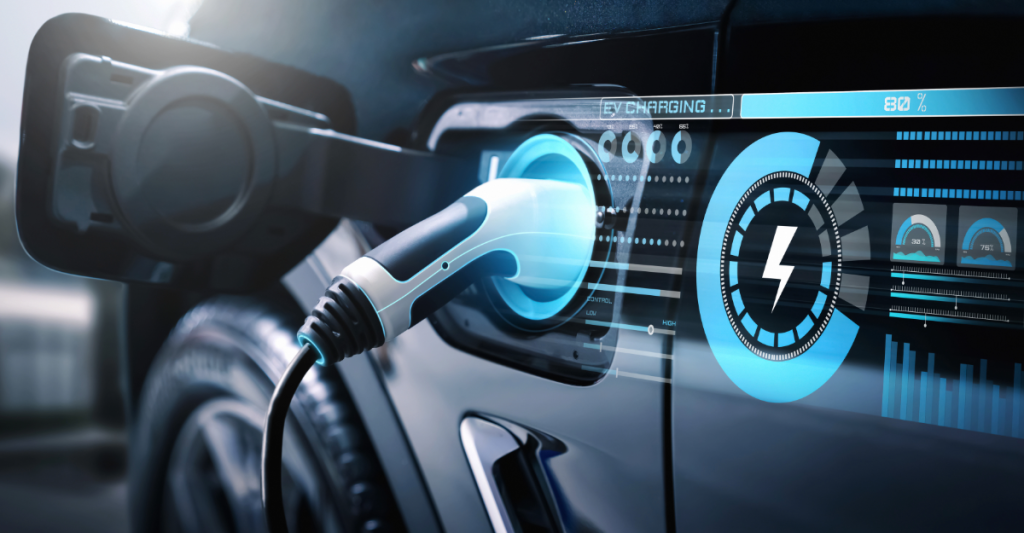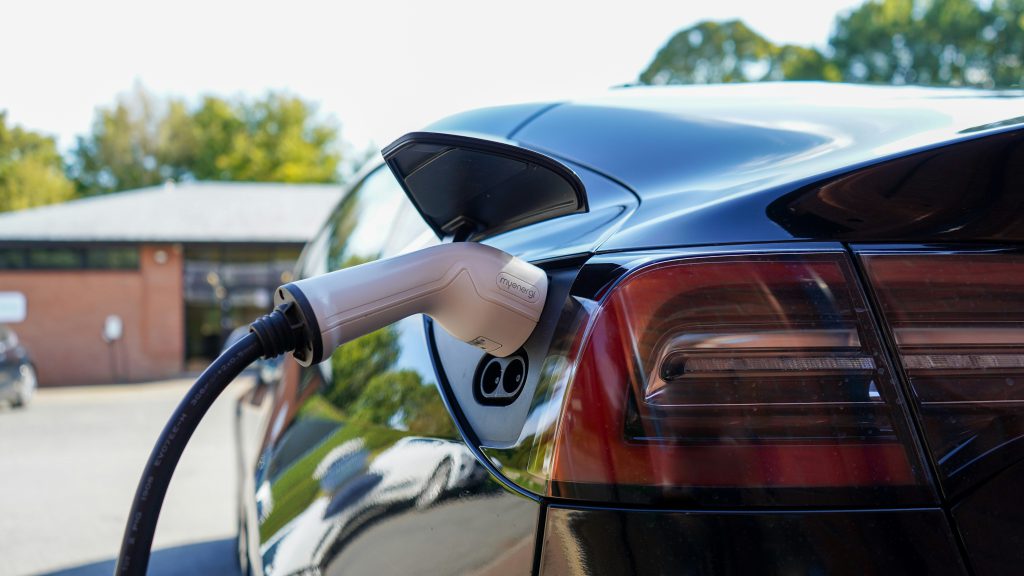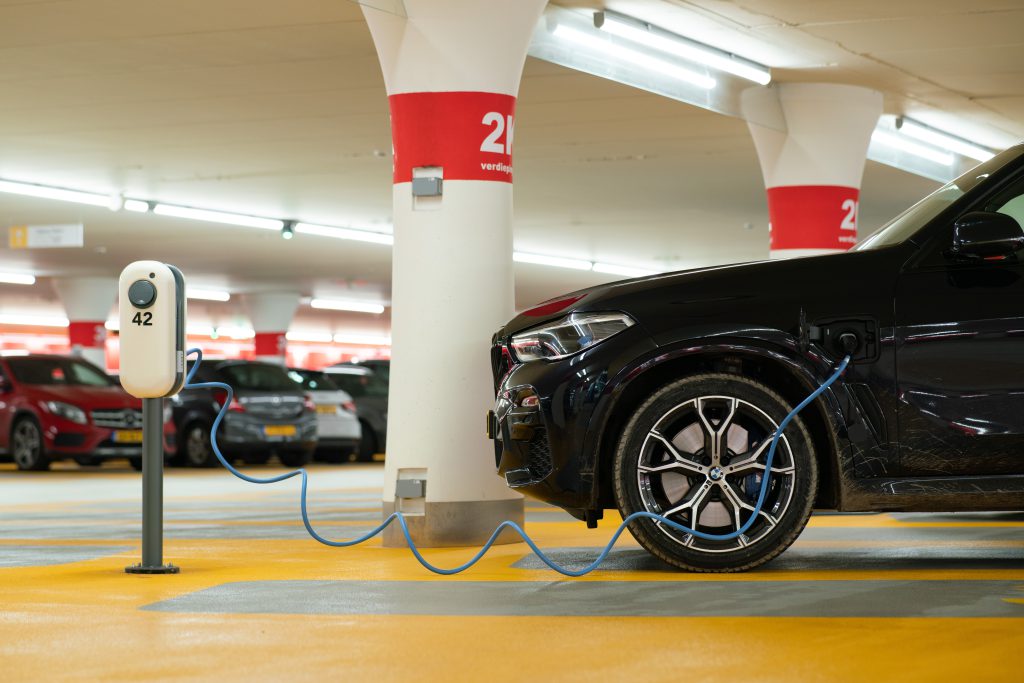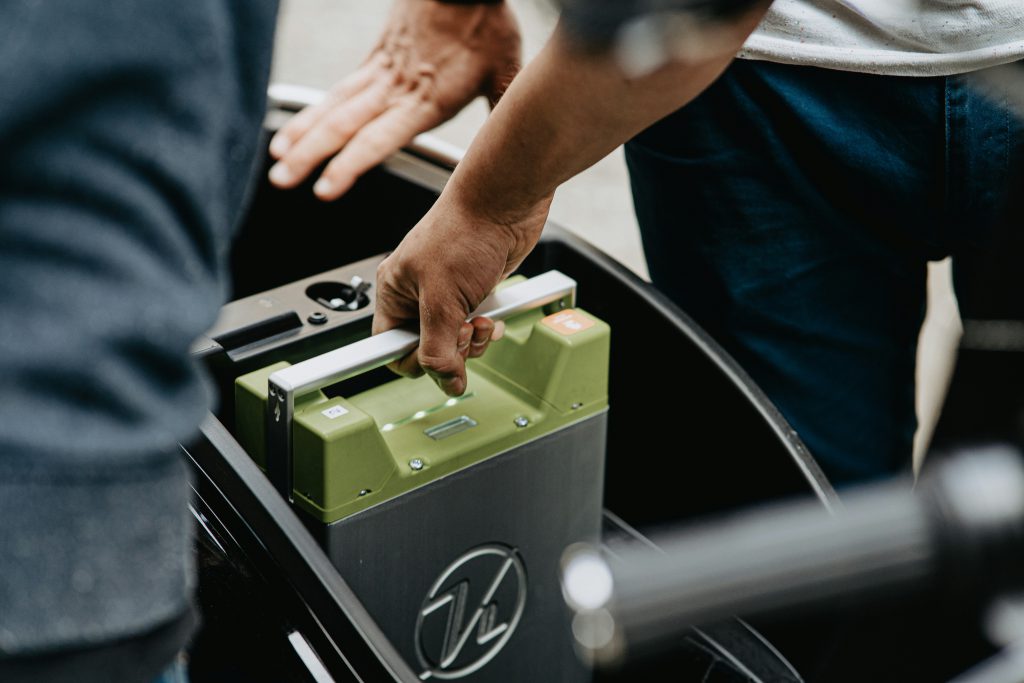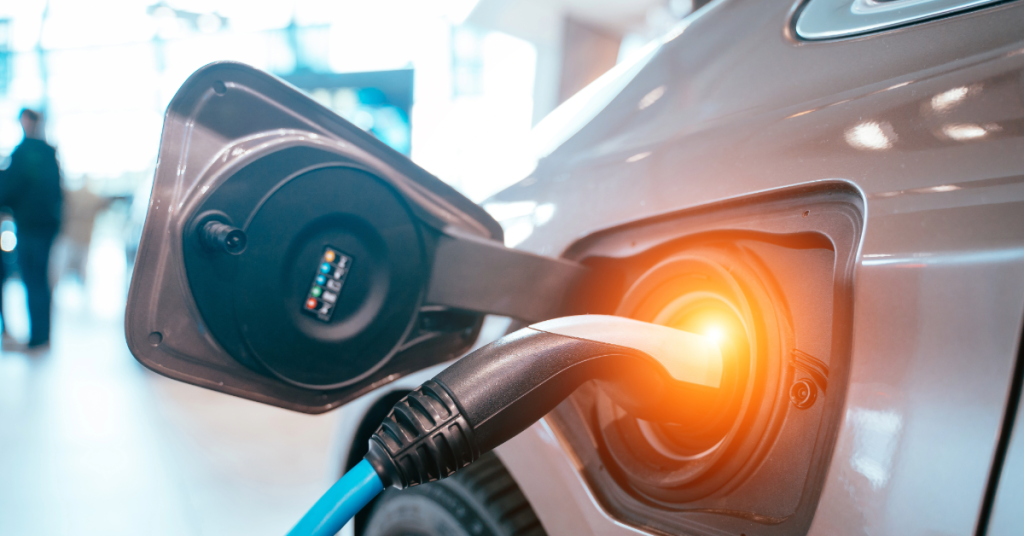Key Takeaways
- This guide provides an overview of EV charging basics, terminologies, charger types and connectors for efficient electric vehicle usage.
- Home and public charging options are discussed along with cost factors to help make economical decisions.
- Innovations in fast chargers plus the role of renewable energy are explored to prepare for future EV use.
Understanding EV Charging Basics
Electric vehicle charging, also known as electric vehicle supply equipment (EVSE), has been around since the inception of electric cars. However, as with any technology, it has witnessed significant advancements over time. Charging an electric car can occur at home, public locations, or at dedicated fast-charging stations, each offering its unique benefits and drawbacks. Grasping the fundamentals of EV charging helps optimize electric vehicle usage and extend its battery life.
Charging an electric car is generally as simple as refueling a gas- or diesel-powered vehicle, and it can even be more cost-effective considering the electricity costs. The charging speed of an electric vehicle depends on several factors including:
- the car’s battery
- its charging capacity
- the power output of the charging station
- the temperature of the battery
Getting acquainted with these factors empowers EV drivers to enhance their charging efficiency.
The Evolution of Charging Stations
Believe it or not, the first EV charging station was introduced way back in the late 1800s. However, unlike the advanced systems we have today, these early charging stations were riddled with challenges like unreliable connectivity and inadequate charging capacity. Over time, these hindrances have been addressed, leading to the development of the robust EV charging infrastructure we see today.
The latest national standards for EV chargers, released in February 2023, mandate the following technical standards:
- Number of charging ports
- Connector types
- Power level
- Interoperability
Terminology Demystified: kW, kWh, and More
Electric vehicle charging comes with its share of jargon. Navigating this sphere requires comprehension of common terminologies like:
- kW (kilowatts): refers to power – the rate of energy transfer
- kWh (kilowatt-hours): refers to energy – the total amount of energy transferred
- AC (alternating current): the type of current used in most household appliances and charging stations
- DC (direct current): the type of current used in fast charging stations and the battery of an electric vehicle
In the EV charging context, the kW output of a charging station indicates its charging speed – the higher the kW output, the faster the charge.
Comprehending these terms, including the combined charging system, and their interrelations is fundamental to becoming proficient in EV charging.
The Anatomy of Electric Car Chargers
When it comes to charging your EV, you have a few options to choose from. The three main types of electric car chargers are Level 1, Level 2, and DC fast chargers. The charging speed for electric vehicles varies based on the type of charging equipment used. Charging speed is significant as it directly affects your waiting time for the EV to charge. For instance, the estimated duration of charging an electric vehicle battery from 20% to 80% state of charge using a DC 50 kW charger is 32 minutes, adding up to 10 miles of range per minute of charging time.
While Level 1 charging offers the slowest charging speed, it is the most accessible as it utilizes a standard residential 120-volt AC outlet. Level 2 charging, on the other hand, offers a substantial speed improvement, providing a maximum output of 22 kW and about 75 miles of range per hour of charging.
Lastly, DC fast charging provides the quickest charging option, requiring a 480-volt connection and offering a speed that can add up to 10 miles of range per minute of charging time. Grasping these charger types and their speeds can aid in making insightful choices about when and where to charge your EV.
From Slow to Fast: Charger Types Uncovered
Charger types range from Level 1, the slowest, to DC fast chargers, the fastest. Level 1 chargers, using a standard residential 120-volt (120V) AC outlet, offer the slowest charging speed. However, it’s the most universally accessible charger type as it utilizes a standard household wall outlet. This slow charging speed is often sufficient for daily use if you’re plugging in overnight or if your daily driving range is low.
On the other side of the spectrum, we have DC fast chargers, providing the quickest charging option currently available. These chargers are particularly useful for long trips when you need to get back on the road quickly. However, frequent fast charging may reduce battery health more than AC charging, so it’s generally recommended to limit the use of fast charging for long trips.
Between these two extremes, Level 2 chargers offer a good balance, providing a faster charging speed than Level 1 chargers and being gentler on the battery compared to DC fast chargers.
Connector Compatibility: Finding the Right Fit for Your EV
The type of connector your EV uses depends on its make and model. Connectors used in electric vehicle charging include:
- SAE J1772 connector (J-plug)
- Type 1 connector
- Type 2 connector
- SAE Combo (CCS1) connector
- CHAdeMO connector
- Tesla proprietary connector
The Type 1 connector, common in North America, is compatible with most Level 2 and DC fast charging stations, and about 80% of electric vehicles and 85% of plug-in hybrid electric vehicles.
The Type 2 connector is more prevalent in Europe and is popular for AC charging. The distinctions between the CCS and CHAdeMO connectors mainly lie in their geographical prevalence; CCS connectors are typically found on vehicles manufactured in North America and Europe, whereas CHAdeMO connectors are more common on vehicles manufactured in Japan.
Comprehending these connectors and their compatibility with your EV is vital for seamless vehicle charging, regardless of location.
Home Charging vs. Public Charging: Pros and Cons
Choosing where to charge your EV often boils down to a choice between home and public charging, each offering its unique benefits and drawbacks. Charging at home is usually the most economical and convenient way to juice up your EV, but it does come with its own set of challenges, such as the need to invest in charging equipment and potential restrictions in charging speed.
On the other hand, public charging stations offer a quick and convenient way to charge your EV while you’re out and about, particularly useful if you’re on a long trip or if you don’t have access to a home charger. However, public charging stations have some drawbacks:
- They can be more expensive than home charging.
- Their availability may not always be guaranteed.
- Charging at public locations often requires you to plan your charging sessions around the availability of charging stations and potentially wait in line during peak times.
Recognizing the advantages and disadvantages of each option assists in making insightful choices about where and when to charge your EV, considering your needs and circumstances.
Home Sweet Home Charging
Charging at home offers the ultimate convenience. You can simply plug in your EV overnight and wake up to a fully charged car ready to take on the day. This is the most common charging method, with 64% of EV drivers opting to charge their vehicles at home. The equipment needed to charge an electric vehicle at home can vary, from a standard Level 1 home connector kit that comes with the vehicle to a Level 2 home charger that you can purchase for a faster charging speed.
However, home charging does come with some costs. While the equipment itself can range in price, additional home charging costs can include installation, which typically costs between $800 and $2,000, and potential upgrades to your home’s electrical system if necessary. The cost of the electricity used to charge your EV will also be reflected in your monthly electricity bill. Despite these costs, home charging is typically less expensive than public charging, especially if you charge during off-peak hours when electricity rates are lower.
On-the-Go Power at Public Locations
Public charging stations, including workplace charging stations, offer the convenience of charging while you’re on the go. These charging stations are typically located in shopping centers, supermarkets, and along major transportation routes, making it easy to charge while you shop or during a road trip. With public charging, you can often utilize fast charging stations that can charge your EV much quicker than a standard home charger, making it a great option for long trips.
Despite the convenience, public charging can have some drawbacks:
- It can be more expensive than home charging, with costs varying from $0.10 to $0.30 per kilowatt-hour depending on the location and charging provider.
- The availability of public charging stations can vary depending on where you live, and you might find yourself competing with other EV drivers for a charging spot, particularly during peak times.
- If you’re renting and wish to install a charger at your residence, you’ll need to obtain permission from your landlord.
Navigating the Cost of Charging an Electric Car
Just as with a gas car, the cost of “fueling” your EV can vary. Charging an electric vehicle, whether at home or in public, will incur costs, but understanding these costs can help you make the most economical decisions for your EV charging needs. The cost of charging an electric vehicle at home is influenced by factors such as:
- the battery’s current state of charge
- the state of your battery in general
- weather conditions
- the type of charger used
The cost of public EV charging depends on factors such as:
- The location of the charging station
- Energy costs at the site
- Policies of the charge point operator
- The development and availability of the grid infrastructure
The pricing structure for public charging stations can vary, with some charging a flat fee per session, while others charge by the hour or by the amount of electricity consumed. Understanding these costs enables you to make sensible decisions about where and when to charge your EV.
Charging Costs at Home: What to Expect on Your Electricity Bill
The cost of charging your EV at home will depend on several factors, including your vehicle’s battery size, your electricity rate, and the charger you use. The size of the battery directly impacts the amount of kWhs it can store, which in turn determines the amount of power required to fill the battery. This, in turn, affects the cost of charging the battery. For example, the estimated cost of charging a Nissan LEAF with a 40-kWh battery and a 150-mile range using Level 2 charging is approximately $12.
Your electricity rate will also influence the cost of charging your EV at home. While the average residential price for electricity in Europe and North America ranges from approximately €/$0.10 to €/$0.32, the cost can vary widely depending on where you live. For instance, the typical price of electricity in California is approximately 18 cents per kilowatt hour (kWh). By strategically charging your EV during off-peak hours when electricity rates are lower, you can minimize your charging costs and make the most of your EV.
Understanding Public Charging Pricing
Public charging stations, while convenient, can be more expensive than charging at home. The cost of charging at a public station can range from:
- $0.10 to $0.30 per kilowatt-hour, depending on the location and charging provider
- Some charging stations may charge a flat fee per session
- Others may charge by the hour or by the amount of electricity consumed
- Some may even offer membership plans or subscription services that provide discounted rates.
For example, the typical cost of charging a Tesla Model 3 at a DC fast charging station is about $50 for a full battery. However, in certain scenarios, the kWh price of electricity at DC fast charging stations can be double or even triple that of the cost of fossil fuels, making the costs comparable. It’s important to review the pricing details of each charging station before using it to understand how they calculate and charge for electricity.
Optimizing Your Electric Vehicle Charging Strategy
Mastering your EV charging strategy involves more than simply understanding the basics of EV charging and the costs associated with it. It also includes optimizing your charging speed and maintaining your battery health, as well as utilizing available incentives. Adopting effective strategies can enhance both your EV charging speed and the lifespan of your battery.
For example, here are some strategies to consider:
- Strategically locating charging stations to ensure optimal positioning and maximize charging speed
- Utilizing energy management and optimization techniques to maximize battery lifespan
- Taking advantage of available incentives to reduce charging costs
Recognizing these factors and adopting these strategies can enhance your EV charging experience and maximize the use of your electric vehicle.
Balancing Speed and Battery Health
When it comes to charging your EV, faster isn’t always better. While fast charging can be convenient, especially for long trips, it can also put more strain on your battery and potentially reduce its lifespan. To ensure the best battery health, it’s recommended to select slow or moderate charging speeds. Topping off your vehicle at around 80% or 90% and avoiding regular or frequent fast charging is also beneficial.
While it might be tempting to keep your battery fully charged at all times, it’s generally recommended to charge your EV when it reaches around 20-30% battery level to avoid excessive battery stress. Keeping the charge level between 20-80% at Level 2 charging rates is also beneficial for battery longevity. By balancing charging speed with battery health, you can prolong your battery’s life and optimize your EV charging experience.
Making the Most of Incentives and Discounts
As an EV owner, you have access to a variety of incentives and discounts that can help to reduce your charging costs. For example, taxpayers may be eligible for a credit of up to 30% of the hardware and installation costs for EV chargers installed during the 2023 tax season. Additionally, many states offer various incentives, such as tax credits, grants, rebates, and discounted electricity rates for EV charging.
Electric vehicle manufacturers also commonly provide incentives for charging, such as:
- free or discounted charging
- charging credits
- home charging equipment discounts
- charging network access
- membership perks
Leveraging these incentives and discounts can substantially lower your EV charging costs, making electric vehicle ownership more cost-effective.
Preparing for the Future of EV Charging
As the EV industry continues to evolve, so does the technology and infrastructure for EV charging. Innovations in fast charging equipment and the growing role of renewable energy in powering electric vehicle charging stations are shaping the future of EV charging. These advancements not only promise to make EV charging faster and more efficient but also more sustainable.
As we look to the future, we can expect a substantial increase in EV charging speed. With the advancement of technology and infrastructure, charging speeds are projected to improve, allowing for:
- Quicker and more convenient charging of electric vehicles
- Reduced charging times
- Increased range per charge
- Enhanced charging infrastructure
Staying abreast of these trends and advancements prepares you for the future of EV charging and allows for continued optimal use of your electric vehicle.
Innovations in Fast Charging Equipment
The world of EV charging is continuously evolving, with new technologies and advancements leading the way. Recent developments in fast charging technology include:
- Wireless charging
- High-speed charging
- Bidirectional charging
- Dynamic charging
- Smart charging
- Portable charging
These advancements promise not only enhanced speed and efficiency in EV charging but also more convenience for electric car drivers, making the internal combustion engine a less attractive option.
For instance, there are several innovations in EV charging that are paving the way for a more efficient and user-friendly experience:
- Wireless charging allows for charging without the need for cables.
- High-speed charging significantly reduces the time it takes to charge an EV.
- Bidirectional charging allows for energy to be stored in an EV’s battery and then sent back to the grid when needed.
- Dynamic charging enables an EV to be charged while it’s moving.
- Smart charging optimizes charging based on factors such as electricity rates and grid demand.
- Portable charging provides a portable solution for charging on the go.
These innovations are paving the way for a more efficient and user-friendly EV charging experience at EV charging stations.
The Role of Renewable Energy in EV Charging
As the world moves towards more sustainable energy solutions, renewable energy is playing an increasingly important role in EV charging. Using renewable energy sources like wind, solar, and geothermal power to charge electric vehicles not only reduces the environmental impact of EV charging but also helps to reduce the burden on the grid and encourages a more efficient and resilient energy system.
Advancements in renewable energy for EV charging include:
- Integration of solar or wind power into charging stations
- Advancements in battery technology for improved energy storage and charging efficiency
- Fast charging technologies
- Intelligent infrastructure
- Wireless charging
These innovations are making EV charging greener, more efficient, and reliable, certifying a sustainable and practical future for EV charging.
Summary
In the journey of mastering EV charging, we’ve discovered the basics of EV charging, the different types of chargers and their speeds, and the pros and cons of home vs. public charging. We’ve also explored the costs associated with charging an EV, how to optimize your EV charging strategy, and what the future holds for EV charging.
As the world continues to embrace electric vehicles, understanding how to effectively charge these vehicles will become increasingly important. By equipping ourselves with this knowledge, we can not only optimize our EV charging experience but also contribute to a more sustainable and energy-efficient future. Let’s continue to drive forward into this electrifying future, fully charged and ready to go!
Frequently Asked Questions
Charging an electric car at a public charging station can cost between $0.20 to $0.60 per kWh, depending on the type of charger and local electricity costs.
An electric car with a 60kWh battery can be fully charged in approximately 8 hours using a 7kW charging station. Drivers can top up their battery in around 35 minutes with a 50kW rapid charger and add 100 miles of range.
Charging stations are generally not free, though some businesses may provide a free charging session for customers. Free EV charging is possible to find through apps such as PlugShare, ChargePoint, and Recargo. However, most charging stations require a fee to use.
Electric cars are powered by rechargeable lithium-ion batteries that can be charged with a standard 120-volt outlet.
All electric vehicles in North America require the SAE J1772 or CCS connector for Level 1 and 2 charging, except Teslas which use the NACS connector. Tesla cars come with an adapter for J1772 connectors.
